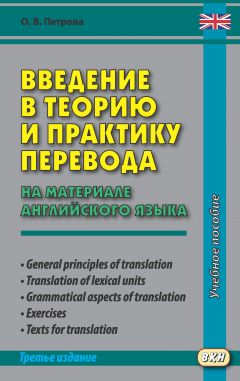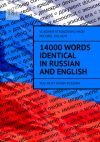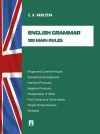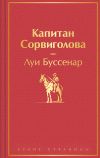
Автор книги: Ольга Петрова
Жанр: Иностранные языки, Наука и Образование
Возрастные ограничения: +16
сообщить о неприемлемом содержимом
Текущая страница: 1 (всего у книги 7 страниц) [доступный отрывок для чтения: 2 страниц]
Ольга Петрова
Введение в теорию и практику перевода (на материале английского языка)
МИНИСТЕРСТВО ОБРАЗОВАНИЯ И НАУКИ РОССИЙСКОЙ ФЕДЕРАЦИИ
ФЕДЕРАЛЬНОЕ ГОСУДАРСТВЕННОЕ БЮДЖЕТНОЕ ОБРАЗОВАТЕЛЬНОЕ УЧРЕЖДЕНИЕ ВЫСШЕГО ПРОФЕССИОНАЛЬНОГО ОБРАЗОВАНИЯ «НИЖЕГОРОДСКИЙ ГОСУДАРСТВЕННЫЙ ЛИНГВИСТИЧЕСКИЙ УНИВЕРСИТЕТ ИМ. Н. А. ДОБРОЛЮБОВА»
Рекомендовано Учебно-методическим объединением по образованию в области лингвистики Министерства образования Российской Федерации в качестве учебного пособия для студентов вузов,обучающихся по специальности «Перевод и переводоведение»
Рецензенты
Литвин Ф. А.–докт. филол. наук, профессор (Орловский государственный университет)
Лаврова А. Н.–докт. филол. наук, профессор (Нижегородский государственный технический университет)
Ответственный редактор
Ивашкин М. П.–докт. филол. наук, профессор
© О. В. Петрова, 2016
© ООО «Издательство ВКН», 2016
General principles of translation
Translation is a process and the result of turning a text from one language into another, which means expressing the same by the signs of a different language. Bearing in mind that every sign has two planes (plane of expression and plane of content) the essence of translation could be described as changing the elements of the plane of expression while the plane of content remains constant.
The language of the original text is called "source language", the language into which the text is translated is called "target language" (the corresponding Russian terms are "исходный язык" and "переводящий язык").
One of the main difficulties of translating lies in the fact that the meaning of the whole text is not exhausted by the sum of meanings of its elements. The meaning of a text is made up by words (characterized by their denotative and connotative meanings and stylistic reference), syntactic meaning of sentences and utterances larger than sentences, suprasegmental elements and lexico-semantic connections between words and phrases.
Every language is characterized by a specific structure of its lexico-grammatical fields and has its own lexical, morphological and syntactic systems. It may result in lack of coincidence between the means of expressing the same content in SL (source language) and TL (target language).
That is why good practical knowledge of the two languages is quite necessary but not sufficient for translating. Besides this knowledge one must possess a number of skills and be guided by a number of principles worked out by the theory of translation. These principles are connected both with linguistic and extralinguistic aspects.
While translating one must keep in view typological characteristics of both the languages and remember that the same idea may be expressed lexically in one of them and grammatically in the other. To illustrate this let us compare the ways of expressing priority in English and in Russian.
The actor, Gilbert Caster, who had been «out» for six months, emerged from his east-coast seaside lodging about noon in the day, after the opening of «Shooting the Rapids», on tour, in which he was playing Dr Dominick in the last act.
(J.Galsworthy)
It is clear from the sentence that the period of Caster’s being «out» was prior to the moment when he «emerged from his… lodging», this priority is expressed by the Past Perfect form «had been». Now that he was playing Dr Dominick he was no longer «out». In Russian, however, it is impossible to render this idea using grammatical means only. The phrase «он был без работы» does not contain any indications to priority of this state. Hence the necessity of introducing additional lexical units conveying the meaning of the English grammatical form:
Актер Гилберт Кейстер, который перед этим шесть месяцев был без работы, …
Concrete ways and means of overcoming such difficulties depend on the structural peculiarities of SL and TL, therefore when translating one must employ one’s theoretical knowledge of phonetic, morphological, lexical and syntactic systems of the two languages.
Besides purely linguistic difficulties, translation involves a great number of problems caused by numerous extralinguistic factors. The content of any text is based upon extralinguistic reality, the text itself reflects the cultural background of the author and of the whole people speaking the language, it also reflects the history of the people, their habits and traditions, a peculiar national way of thinking, etc. All these things should necessarily be taken into consideration in order to translate the text adequately. One must know much more than the lexical meaning of the words to translate the following:
«What will you have?» he asked me. I looked at him doubtfully. Prohibition was in force and to all appearance the ship was bone-dry.
(S.Maugham)
First of all it is necessary to know that the formula «What will you have?» has a conventional meaning of an invitation to choose some liquor. Besides one should know what «Prohibition» is meant here (the eighteenth amendment to the US Constitution) not to translate it as «запрет». Only in this case there may appear a correct version:
«Что Вы будете пить?», спросил он. Я посмотрел на него с недоверием: сухой закон был в силе, и на корабле, судя по всему, не было ни капли спиртного.
It is also most essential to remember that nations speaking different languages have different experience, and things naturally known to one nation are quite unknown to another. To see it one may try to translate into English the title of the film «Петровка, 38», making it as informative for Englishmen or Americans as it is for us because we know perfectly well what office is situated there.
One of the main demands upon a person translating any text is that they should be well acquainted with its subject matter. It certainly requires some knowledge of physics to decide if the word "power" in a particular context means "сила" or "мощность", which is not the same thing.
If all these principles are taken into consideration there will be no danger of so-called "literal" translation, which means a word-for-word translation. This type of translation with all its seeming accuracy ignores both linguistic and extralinguistic factors discussed above. It leads to preserving the meanings of separate words and at the same time it distorts the meaning of the whole text (or sentence), thus often creating an undesirable comic effect. The reader is sure to be surprised at such a sentence:
…в гостиной стояли одиннадцать кресел, диван, три столика, две этажерки, …и часть большого рояля.
The phrase «part of a large grand piano» does not mean that the grand piano was divided into parts, just as the Russian expression «четверть скрипки», denoting a special little violin for children, does not mean that the violin is broken into four parts. So the phrase should be translated as «небольшой рояль», which differs from «part of a large grand piano» in structure, but conveys the same meaning.
These are the main principles one should follow in the process of translating.
Translation of lexical units
Types of correlation between words in source language and target language
There are different types of correspondences between the elements of the SL and TL lexical systems.
I. A word of SL and a word of TL may be identical in their meaning. Such words are called equivalents (the corresponding Russian term is эквиваленты). To this group usually belong proper names such as "London – Лондон", "Galsworthy – Голсуорси", etc.; terms such as "a morpheme – морфема", "logarithm – логарифм", etc.; names of the months, days of the week; numerals. Equivalents are usually monosemantic words and they are easily translated.
II. The meanings of a SL word and a TL word may coincide partially (частичные, или вариантные соответствия). There are three variants within this type.
1. A word in one of the languages may have more meanings than the corresponding word of the other language, so that the meaning of the latter is as it were included in the meaning of the former, e.g. the English noun "finish" and the Russian noun "финиш" both denote "the conclusion, end", which completely exhausts the meaning of the Russian word. The English word "finish", however, also denotes "that which finishes, completes or perfects", which corresponds to the Russian words "окончание", "отделка", "аппретура". Thus the meaning of the word "finish" includes the meaning of the word "финиш", but is not exhausted by it. This is the first variant of semantic relations characterized by partial coincidence of meanings.
2. The second variant of semantic relations between partially corresponding words may be described as intersection. It means that both the words have some meaning (or even meanings) in common, but at the same time each word has some other meanings which do not coincide. E.g.: the English word "cup" and the Russian "чашка" both mean "a drinking-vessel", besides which the word "cup" means "an ornamental vessel offered as a prize for an athletic contest" (in Russian – "кубок"), while the Russian "чашка" denotes also "круглая и плоская тарелка, подвешенная к коромыслу весов", which corresponds to the English word "pan". Thus the meanings of these two words ("cup" and "чашка") intersect in one point only – i.e. they both denote a drinking-vessel.
3. The third variant of relations within this type is somewhat more complicated. The fact is that different peoples reflect reality in different ways, and these differences find their manifestation in the languages which the peoples speak. It is well known that to the speakers of English it seems quite necessary to differentiate between a hand and an arm, while in Russian we usually do not feel it so very important and use the word "рука" to denote both the notions (cf. also "watch" and "clock" – "часы", "mirror" and "looking glass" – "зеркало", etc.). On the other hand we usually differentiate between "вишня" and "черешня", while for the speakers of English there exists one notion ("cherry"), as well as "клубника" and "земляника" are both called "strawberry"; we think that "почка" and "бутон" are quite different things, while in English they always call it "a bud", no matter whether it is going to form a leaf or a blossom.
It does not mean, of course, that we cannot express the difference between a hand and an arm in Russian or that English speaking people do not see any difference between a leaf bud and a blossom bud. They do, but traditionally some aspects of reality are reflected as differentiated notions in the mind of one people and as undifferentiated notion in the mind of another people. Theoretically speaking, every language can express everything, but it differs from other languages in what it should express.
This group of words demands special attention because it often causes trouble in the process of translation (for instance, try to translate the following sentence into Russian: "They both married their cousins").
In all the cases when the meanings of words coincide partially there arises a problem of choosing the right variant of translation. This choice should be based on two factors: on the knowledge of possible semantic relations between the words of SL and TL and on the information derived from the context.
III. Finally, in one of the languages there may exist words which have no correspondences in the other language at all (безэквивалентная лексика). They are usually proper names not used or even known in other countries (personal names such as Aubrey, Hope, Игорь, Галина, etc.; place-names such as Hindley, Catmose, Молитовка, Урень, etc.), and names of specifically national notions and phenomena (such as muffin, drugstore, startup, самовар, щи, агитбригада, стройотрядовец, etc.).
Context and its role in translation
The meaning of equivalents practically does not depend on the context, so to translate them one should merely look them up in a dictionary. The demand to consult dictionaries is essential. No guesswork is allowed in translation: a word should be either known or looked up; otherwise there is always a risk of translation the word «data» as «дата» or «billet» as «билет» or writing some other nonsense of the kind.
It is much more difficult to translate those words of SL that are characterized by partial correspondence to the words of TL. Such words are mostly polysemantic. That is why in order to translate them correctly it is necessary first of all to state which particular meaning of such a word is realized in the utterance. The most reliable indicator in this case is the context in which the word is used.
They usually differentiate between linguistic context and extralinguistic context (or context of situation). Linguistic context in its turn is subdivided into narrow (context of a phrase or a sentence) and wide (utterance-length context or sometimes context of the whole text). Very often the meaning of a word is revealed in the minimum context, i.e. in a phrase ("green" – зеленый, юный, незрелый, etc., but there is no problem in translating the phrase "green trees" – "зеленые деревья" or "green years" – "юные годы"). However, there are such cases when we need at least a sentence to see what the word means, e.g. "I’ll be sitting in the 3rd carriage from the front of the train" – "Я буду в третьем вагоне от начала поезда". The whole sentence is necessary here to understand the meaning of the word "carriage" and to choose the variant "вагон" but not "экипаж, повозка".
Sometimes linguistic context is closely connected with extralinguistic factors. It may be illustrated by the following sentence:
… he came to be convicted of perjury… in Wakawak, Cochin China…, the intent of which perjury being to rob a poor native widow and her helpless family of a meager plantain-patch, their only stay and support in their bereavement and desolation.
(Mark Twain)
The word «plantain» denotes either «банан» or «подорожник». In the sentence there is no direct indication of the type of plant. However, we know that the events took place in Cochin China, where the climate is quite suitable for bananas, not for «подорожник». Moreover, it is said in the sentence that the plantain-patch was the «stay and support», it gave the family either food or profit. All this settles the problem of choice: in this case «plantain» means «банан».
The context of the situation becomes especially important if the linguistic context is not sufficient for revealing the meaning of the word. When one of G. B.Shaw’s characters warns his interlocutor not to drive him too far, it is necessary to know that they are both sitting in the parlor and not in any vehicle, so the verb "to drive" is used in the meaning "привести в какое-то состояние, довести до…". It may so happen that linguistic context does not give any clue to the meaning of the word. Especially often it is the case with neologisms that do not correspond to any words in TL. To understand the word "Reagangate", which appeared in American newspapers in 1983, one must remember the notorious political scandal called "Watergate" in 1972–1974 and know some facts characterizing political methods or President Reagan. Only in this extralinguistic context can we understand the meaning of the word "Reagangate" – "a new political scandal revealing dishonest methods used by Reagan during the election campaign and resembling the methods once used by Nixon".
So translation of any word begins with contextual analysis of its meaning, after which it becomes possible to correctly choose the corresponding word of TL. All types of context can help to identify the meaning of words in SL characterized by partial correspondence to the words of TL, as well as the meaning of words that do not correspond to any words of TL. Translation of the latter group causes many difficulties and requires special means.
Translation of words having no correspondence in TL
There are several ways of translating such words. The simplest way is to transcribe them (lobby – лобби, lump – ламп, спутник – sputnik, комсомол – Komsomol, etc.). This method is widely used for rendering personal names, placenames, titles of periodicals, names of firms and companies.
Sometimes transliteration is used for the same purpose, but transcription is preferable because it renders the original sound-form of the word, while transliteration is based upon its graphical presentation (cf. two ways of rendering the name of Shakespeare in Russian: its transcription is Шекспир while its transliteration is Схакеспеаре). It is evident that for the purposes of oral communication it is necessary to know the sound-form of the names, so with the growth of contacts between the countries transliteration is being gradually ousted by transcription. Those names which have already been rendered by means of transliteration are now traditionally used in this form (King George – король Георг, not король Джордж) and there is no need to change them. Such names should not be translated anew, they have their translated equivalents. However, in translating names hat have no equivalents, it is preferable to use transcription.
Being a very good way of rendering proper names, transcription is not very convenient for translating notional words. Substitution of the Russian sounds for the English ones does not make the English word understandable for the Russian readers. The words "драгстор" or "ламп" are hardly more informative for them than the original "drugstore" or "lump". That is why transcription is often combined with footnotes or explanations introduced into the text by the translator. As soon as the new word is thus explained it can be freely used in the text in its transcribed form. A good example of such introduction of a foreign word is found in one of G.Simenon’s books:
…они отправились на авеню Фридланд к юрисконсульту посольства – к "солиситору", как его называют американцы. …Солиситор позвонил по телефону следователю… А затем они возвратились в «Мажестик», и там Кларк в компании с солиситором выпили в баре по две рюмки виски…
(translated by Н. Немчинова)
The word «solicitor» here is transcribed and its meaning is explained («юрисконсульт»), after which the transcription is used without further explanation.
The same method is used when translating the names of companies or titles of periodicals. E.g. " 'Daily Express' reports…" should be translated as "Английская консервативная газета 'Дейли Экспресс' сообщает…" because the title "Daily Express" is well known in England and "Дейли Экспресс" is not so widely known (and not informative in itself) for the Russian readers.
It is necessary to remember that explanations and footnotes contain additional information which is not expressed directly in the original text and is introduced by the translator. So it demands great knowledge on the part of the translator.
In case of composite words loan-translations (кальки) can be coined in the TL, e.g. the English noun "moonquake" is quite adequately translated as "лунотрясение", "as well as the Russian "луноход" is rendered in English as "moon crawler".
The next method of translating words having no correspondence in TL is based on approximate rendering of the notion (приближенный перевод). It can be described as "translation on the analogy". If a word in SL expresses some notion that has no name in TL it is necessary to look for some analogous, similar (though not identical) notion in TL. E.g.: if we are not translating a cookery book but a story or a novel it is quite possible to translate the Russian "кисель" as "jelly", though actually they are different things (they use starch for "кисель" and gelatin for jelly). Another example – in Russia we do not use wardrobe trunks and it is next to impossible to find a Russian way of expressing this notion, but usually (unless it is very important for the context) it can be quite satisfactorily translated as чемодан (or, if necessary, большой чемодан).
The last way out of the difficulty caused by lack of correspondence between words of SL and TL is the so-called descriptive translation (описательный перевод). In this case the meaning of one word in SL is rendered by a group of words in TL ("spacewalk" – "выход в открытый космос", "spacesick" – "не переносящий условий космического полета"; "самодеятельность" – "amateur talent activities", "районирование" – "division into districts", etc.).
So there are five principal ways of translating words that have no direct lexical correspondences in TL. They are 1) transcription and transliteration, 2) footnotes and explanations, 3) loan translation, 4) analogical translation, and 5) descriptive translation. They all have certain drawbacks and their use is limited both by linguistic and extralinguistic factors (explanations make the text too long and sometimes clumsy, loan translation is applicable only to composite words, analogues are not always accurate enough, etc.). However, proper combination of these means makes it possible to translate any text rendering all the necessary information. When choosing means of translating it is also important to keep in view stylistic characteristics of the text itself and of different words in both the languages. Special attention should be paid to peculiarities of word combinability in TL, which may differ greatly from that of SL.
Правообладателям!
Данное произведение размещено по согласованию с ООО "ЛитРес" (20% исходного текста). Если размещение книги нарушает чьи-либо права, то сообщите об этом.Читателям!
Оплатили, но не знаете что делать дальше?








































